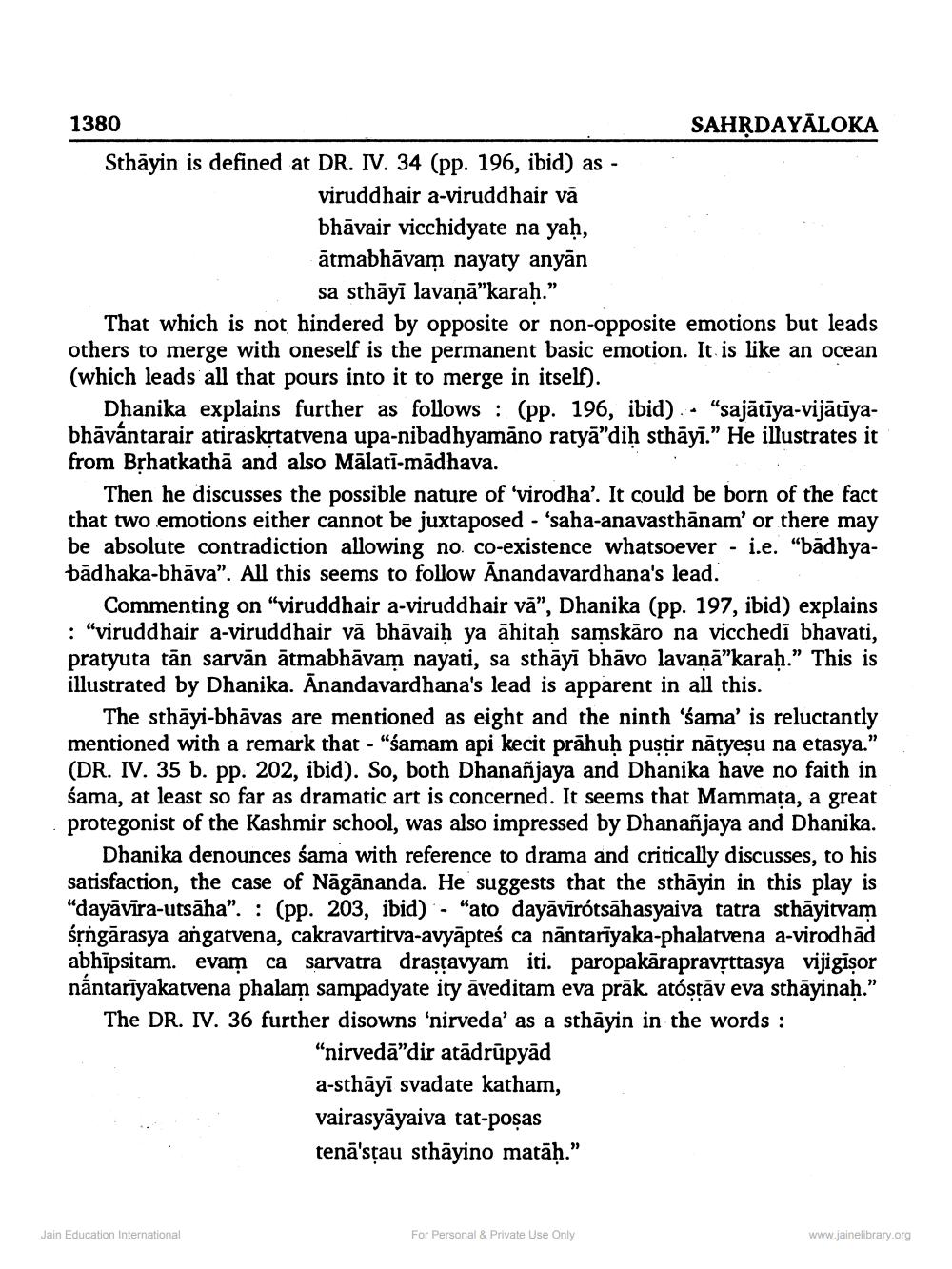________________
T
1380
SAHRDAYĀLOKA Sthāyin is defined at DR. IV. 34 (pp. 196, ibid) as -
viruddhair a-viruddhair vā bhāvair vicchidyate na yah, ātmabhāvam nayaty anyān
sa sthāyi lavaņā”karaḥ.” That which is not hindered by opposite or non-opposite emotions but leads others to merge with oneself is the permanent basic emotion. It is like an ocean (which leads all that pours into it to merge in itself).
Dhanika explains further as follows: (pp. 196, ibid). - "sajātīya-vijātīyabhāvántarair atiraskrtatvena upa-nibadhyamāno ratyā"dih sthāyi." He illustrates it from Brhatkathā and also Mālati-mādhava.
Then he discusses the possible nature of 'virodha'. It could be born of the fact that two emotions either cannot be juxtaposed - 'saha-anavasthānam' or there may be absolute contradiction allowing no. co-existence whatsoever - i.e. "bādhyabädhaka-bhāva”. All this seems to follow Anandavardhana's lead.
Commenting on "viruddhair a-viruddhair vā", Dhanika (pp. 197, ibid) explains : "viruddhair a-viruddhair vā bhāvaih ya āhitah samskāro na vicchedi bhavati, pratyuta tān sarvān ātmabhāvam nayati, sa sthāyi bhāvo lavanā”karah.” This is illustrated by Dhanika. Anandavardhana's lead is apparent in all this.
The sthāyi-bhāvas are mentioned as eight and the ninth 'sama' is reluctantly mentioned with a remark that - "śamam api kecit prāhuḥ puştir nätyesu na etasya." (DR. IV. 35 b. pp. 202, ibid). So, both Dhananjaya and Dhanika have no faith in sama, at least so far as dramatic art is concerned. It seems that Mammata, a great protegonist of the Kashmir school, was also impressed by Dhanañjaya and Dhanika.
Dhanika denounces sama with reference to drama and critically discusses, to his satisfaction, the case of Nāgānanda. He suggests that the sthāyin in this play is "dayāvīra-utsäha”. : (pp. 203, ibid) - "ato dayāvīrótsāhasyaiva tatra sthāyitvam śrngārasya angatvena, cakravartitva-avyāpteś ca nāntarīyaka-phalatvena a-virodhād abhīpsitam. evam ca sarvatra drastavyam iti. paropakārapravrttasya vijigisor năntarīyakarvena phalam sampadyate ity āveditam eva prāk atostāv eva sthāyinah.” The DR. IV. 36 further disowns 'nirveda' as a sthāyin in the words :
"nirvedā"dir atādrūpyād a-sthāyī svadate katham, vairasyāyaiva tat-posas tenā'sțau sthāyino matāḥ.”
Jain Education International
For Personal & Private Use Only
www.jainelibrary.org




